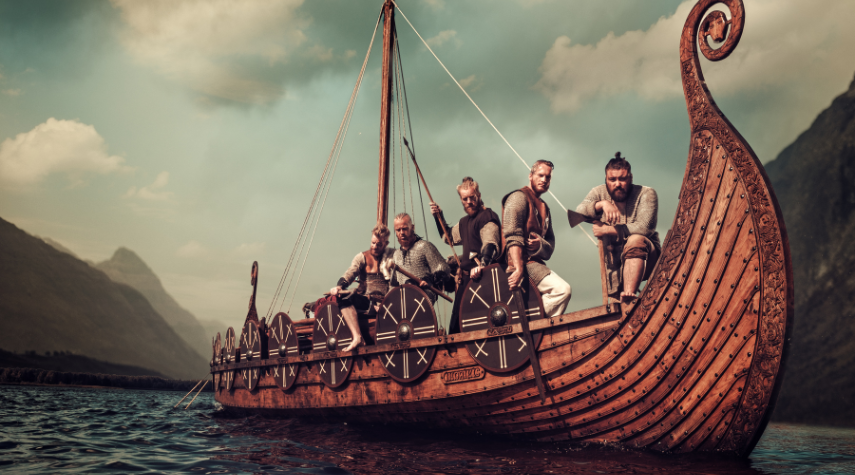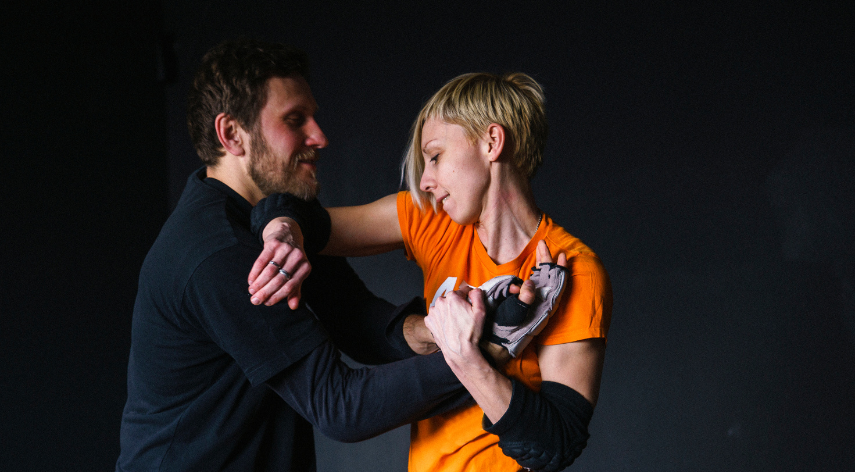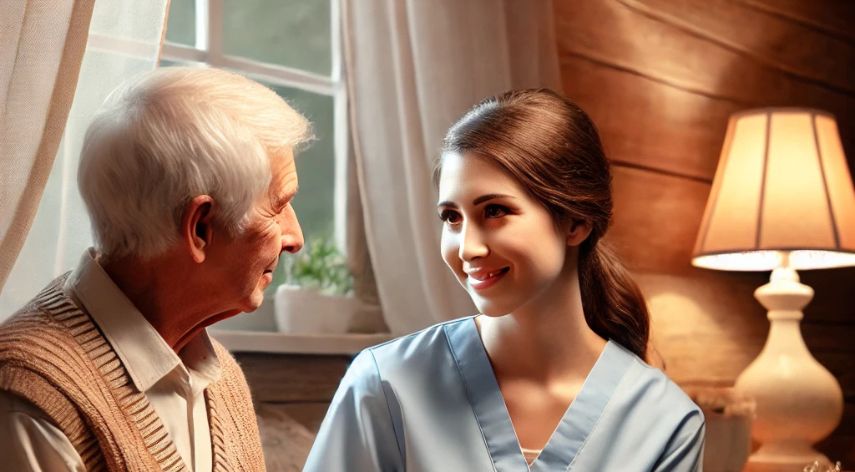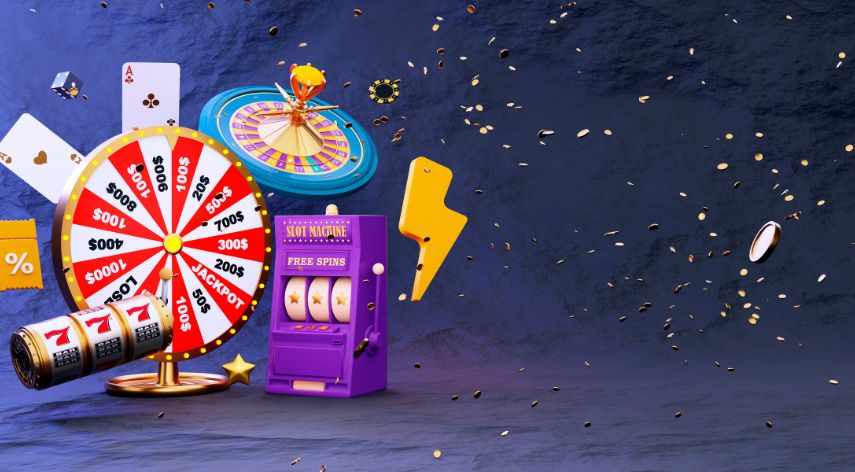Uncovering the History of Authentic Viking Armor

According to research, 35% of males in Denmark, Norway, and Sweden are descendants of the Viking culture. One of 33 British men today has Viking ancestors. While the stories of Vikings may seem long ago, their bloodline still lives today, and so does the Viking spirit.
It was an age made for legends. The most curious topic for people today is what authentic Viking armor looked like. The images make us believe they were the most heavily armored of all time, but is that true?
While some of what we know is true, most come from word of mouth and may have been altered over time. Keep reading as we uncover the Viking-era truth and myth.
Table of Contents
ToggleSeparating Fact From Fiction
While the Gjermundbu helmet is a common symbol of the Viking-era, there is not much we know about authentic Viking armor; we do know that making plate armor was toilsome. Therefore, only the wealthiest could afford it.
The Nordic Iron Age ended with the Viking Age, from c. 793 to 1066 CE. It also begins in the High Medieval Period.
The Viking culture of the Scandinavian peninsula began using iron. It was mainly exported from bog iron in Denmark. This was about 500 BCE, centuries after other southern cultures had started sourcing iron.
Intelligent iron-making techniques were a slow process. While it began with weaponry, people also wanted iron for agricultural purposes. Therefore, it became a precious metal.
The End of the Nordic Iron Age
The last phase coincided with the fall of the Roman Empire. This was around the 5th century CE when the Germanic kingdoms rose through formerly Roman provinces. It was during this time that gold was flowing north toward Scandinavia.
Trading with the mighty Roman empire for centuries helped Viking culture understand advanced techniques for foundry and weapon-making.
Some say the Viking Age began in 793 CE with the raid on Lindisfarne. People of the Viking societies had a golden opportunity during this time to access lots of iron weapons.
The Viking raids and trading brought a wealth of arms, from knives to axes. The Viking people highly sought after protective armor and Frankish-made swords. For those who love learning about this culture, we recommend you check out the Viking shirts on this site.
Where Is the Proof?
The Vikings have a ruthless reputation for being warriors with the most armor and weapons. Yet despite these allegations, there is little record of it. Not much from the archaeological record can be seen of their plate armor.
We know about authentic Viking armor from tall tales of the Norse sagas. These stories would entertain folks during long, cold Nordic winter nights. There are also a handful of illustrations from this time.
For a culture built so high on myths about their truly masculine warrior cult, records of it are scarce. Meanwhile, intelligent archaeologists, historians, and academics have been working to assemble the puzzle’s mysterious pieces.
While the people of Europe’s coastal communities still give accounts of the stories told, including priests and monks, there is no physical catalog of Viking-era armor.
What Did Viking Warriors Look Like?
Only a few from the Nordic Iron Age were actual Viking warriors. Of those deemed warriors, a fraction had enough wealth to buy enough protective iron armor to cover them from top to bottom. Many people from this age were agricultural workers and limited financial resources.
Because so many during the Viking-era were poor, many hypotheses that they were more able-bodied than covered with armor. This is called the “Viking expansion.”
One resource that was cheap in those days was leather. It was also readily available, making it a perfect liner for protection and absorbing the blows from an opponent’s weapon. Other options for clothing materials include linen, wool, and possibly hemp.
It may not sound like the best protection, but it was better than nothing.
Did Plate Armor Exist in the Viking-Era?
The short answer is yes. It was less common, though, compared to materials like leather.
From 1000 to 1050 AD, plate armor began to appear. The plate armor that Vikings used was mostly made of lamellar and scales. This armor would usually be placed over a padded gambeson or maille, adding a layer of protection from swords and axes.
Among the warrior class of the Vikings, plate armor was famous. Lamellar armor was the most popular. This is a series of iron plates that the Viking people would sew together.
Because it offers flexibility and protection, it is an effective armor. Plate armor was worn over various types of clothing.
Did They Wear Helmets?
Again, the short answer is yes. Those who could afford Viking-era armor could use helmets of wood or metal, although some evidence suggests that a warrior’s helmet may have been made of leather or bronze and with reinforced metal plates.
They also wore chainmail for increased mobility and additional protection. For those who could afford Viking plate armor, the warrior using it could excel at combat. They could protect themselves at home and on the battlefield.
Authentic Viking Armor
Hopefully, we did not burst your bubble about the brutality of the Viking culture. Regardless of what authentic Viking armor was made of, the Viking spirit will live forever.
The more we know about our history, the better future we can build, which is why it is essential to understand what is fact and fiction. We can learn from Viking stories, which clarify why things are the way they are today.
We publish fun and exciting articles daily, so don’t leave. Keep clicking as we unravel more of the mysteries Earth has to offer.
Andrew Barry, a seasoned expert in product reviews, brings a keen eye and insightful analysis to the world of consumer goods. With a passion for evaluating and recommending the best products, he navigates the market to help consumers make informed decisions.
Recommended For You
Spread the loveWelcome to an exclusive insider’s look at the meteoric rise of Lerner and Rowe – a powerhouse in
Spread the loveInvesting in property abroad is an exciting venture that offers numerous benefits, from financial gains to lifestyle improvements.
Spread the loveWelcome to SGS Krav Maga – your premier destination for self-defense training in Mortdale, NSW, Australia. Our center





